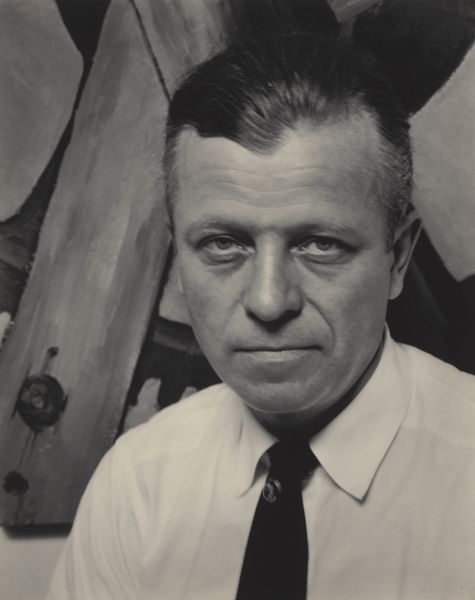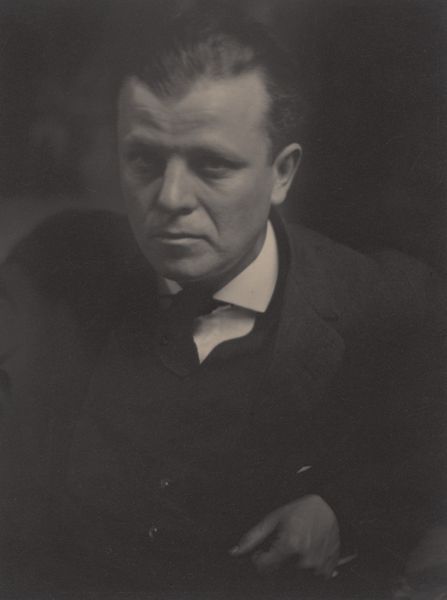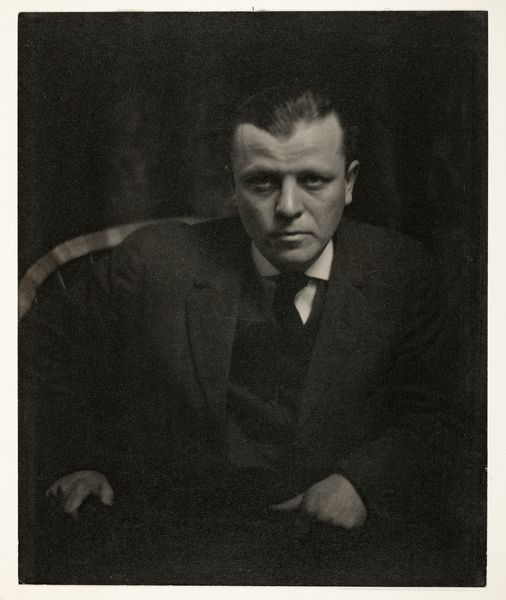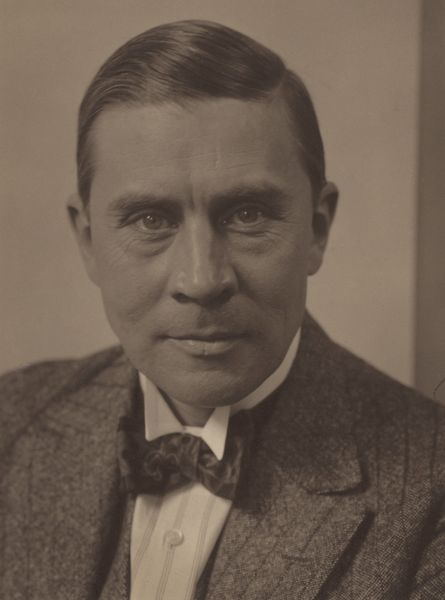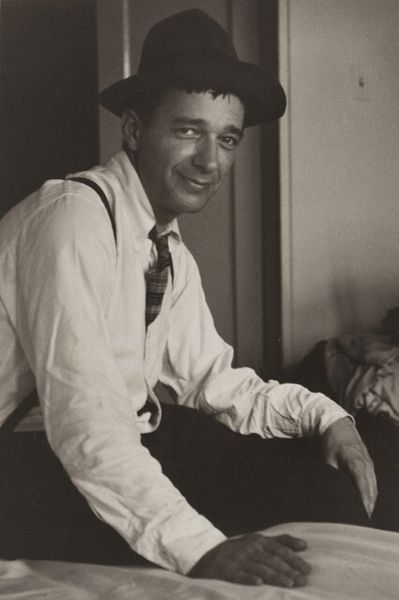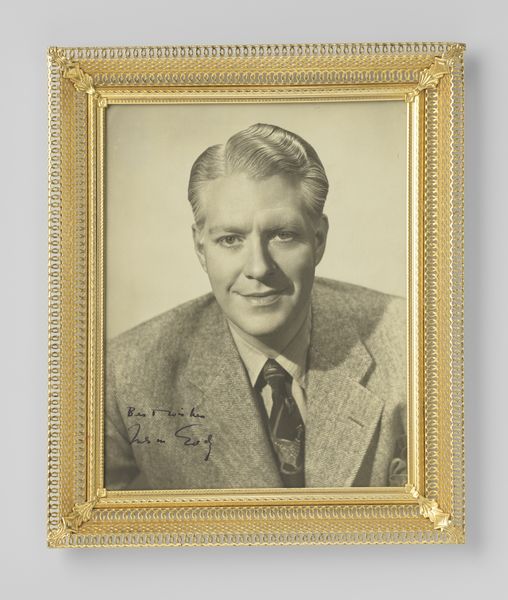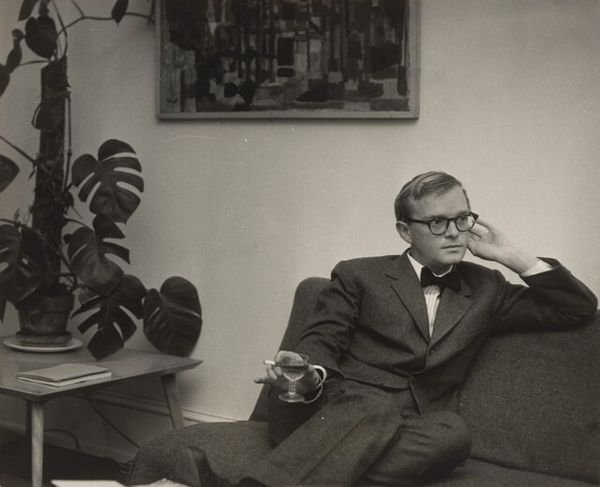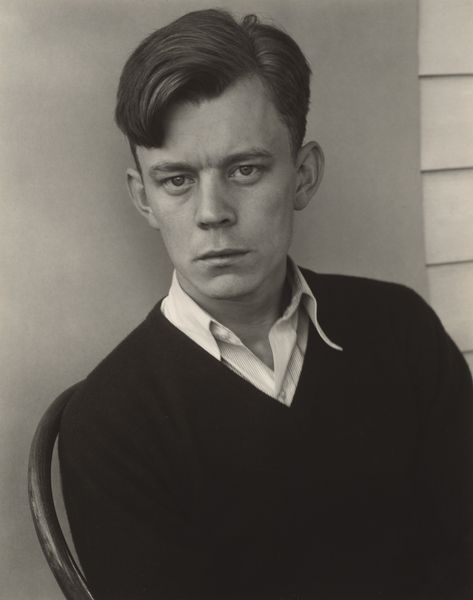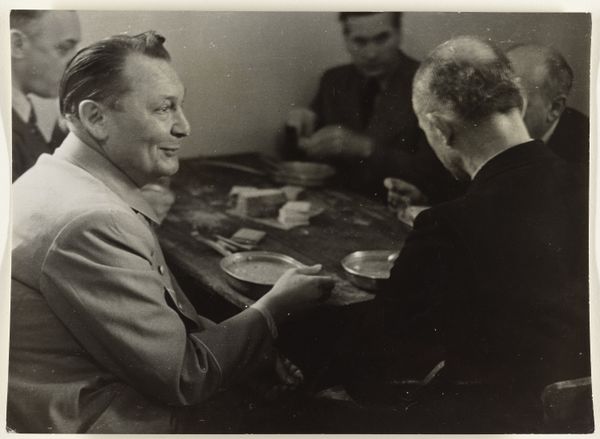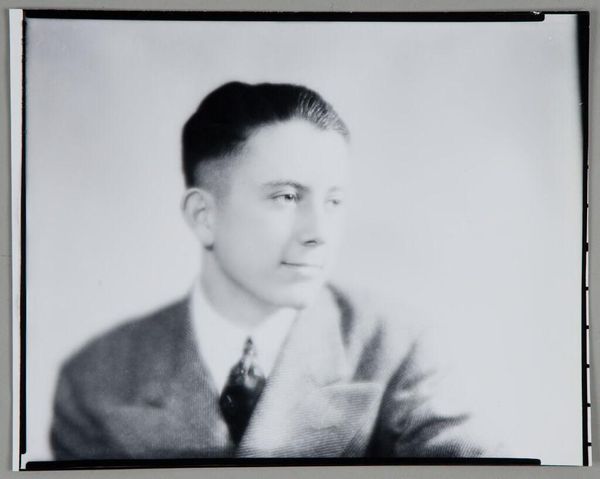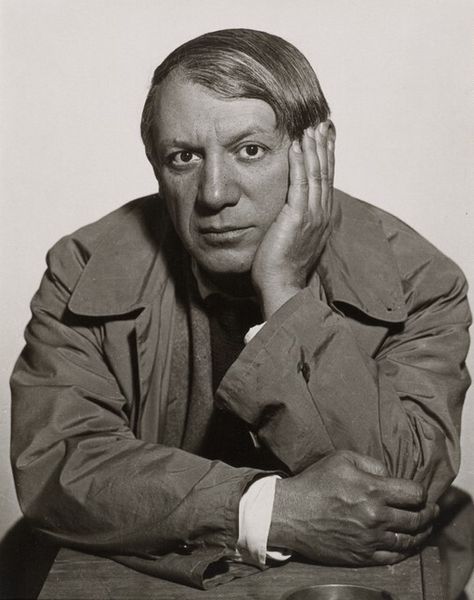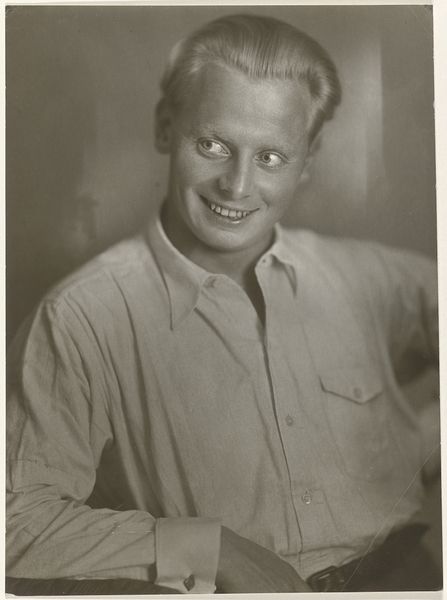
silver, paper, photography, gelatin-silver-print
#
portrait
#
silver
#
self-portrait
#
portrait
#
portrait subject
#
paper
#
photography
#
gelatin-silver-print
#
united-states
#
modernism
Dimensions: 24.3 × 19.2 cm (image/paper/first mount); 56.3 × 46.3 cm (second mount)
Copyright: Public Domain
Curator: Immediately, I’m struck by the intensity in those eyes. They seem to penetrate the surface, almost daring you to look away. Editor: Indeed. What we have here is a gelatin-silver print, a portrait of Alfred Stieglitz taken by Arthur Dove around 1923. You can currently find it residing at The Art Institute of Chicago. This places it squarely within the Modernist movement, a pivotal period of artistic innovation in the United States. Curator: Modernism always makes me think about challenging norms and searching for new ways to express identity. This portrait seems almost defiant, pushing back against conventional portraiture. Do you agree? Editor: Absolutely, and it’s worth considering the dynamic between Stieglitz and Dove. Stieglitz was, of course, a monumental figure in championing modern art in America, not to mention a renowned photographer himself. He played a significant role in pushing for the acceptance and celebration of American avant-garde expression. This work operates on so many layers of cultural and artistic discourse. Curator: Looking at his features – the firm set of his jaw, the focused gaze – I wonder about the politics of representation at play here. Whose gaze are we really encountering, Stieglitz’s or Dove’s interpretation of him? I’d like to hear perspectives on that interplay. Editor: And it begs the question of audience, of course. To what extent are these portraits acts of mythmaking? Are they reinforcing Stieglitz’s already powerful image within the art world? The subtleties of social power relations in arts are so compelling. Curator: That’s so vital to understanding works like these; what power structures enable artists and who benefits? Does it offer space to artists often marginalized, like women artists? This brings fresh discussions in thinking of historical context that informs today's reality, particularly art’s purpose in society. Editor: Indeed. When contextualized into this understanding it raises pertinent questions. Thank you for that view. Curator: And thank you; you shed light onto some considerations in historical framework here, it inspires some fascinating further exploration.
Comments
No comments
Be the first to comment and join the conversation on the ultimate creative platform.
